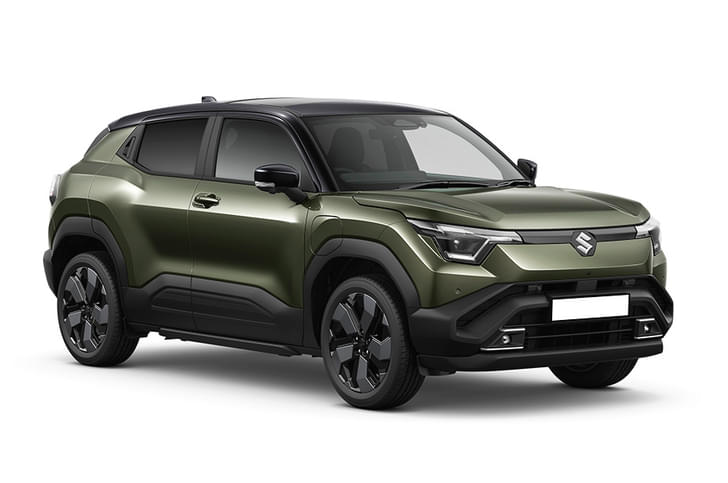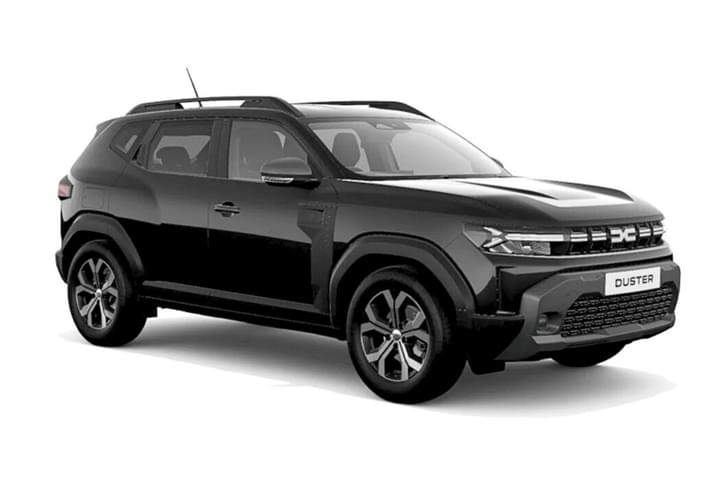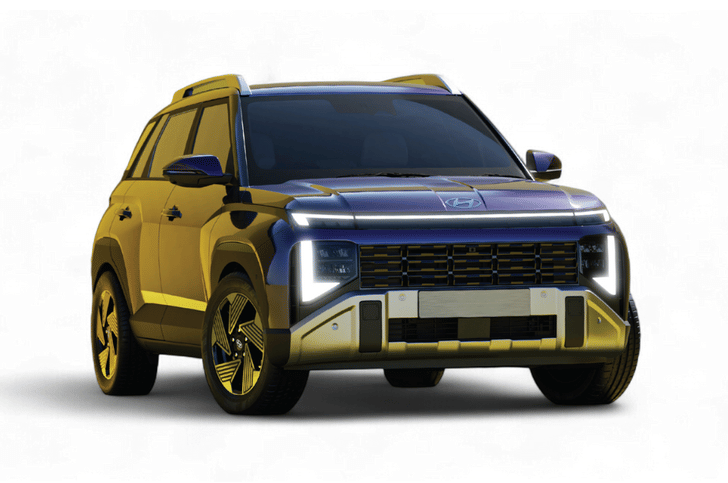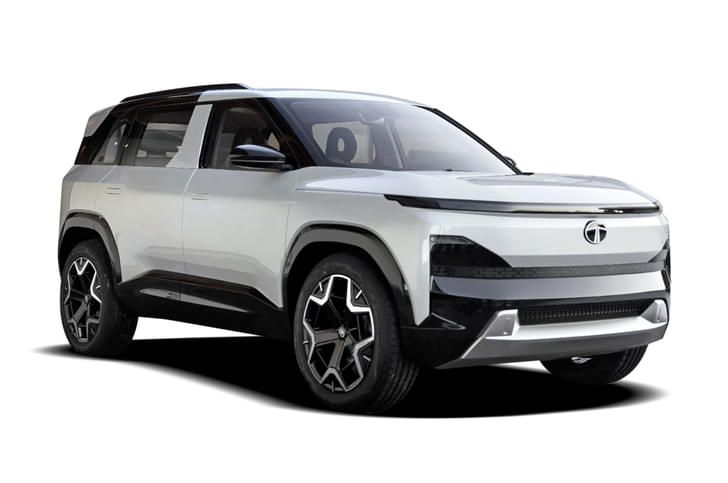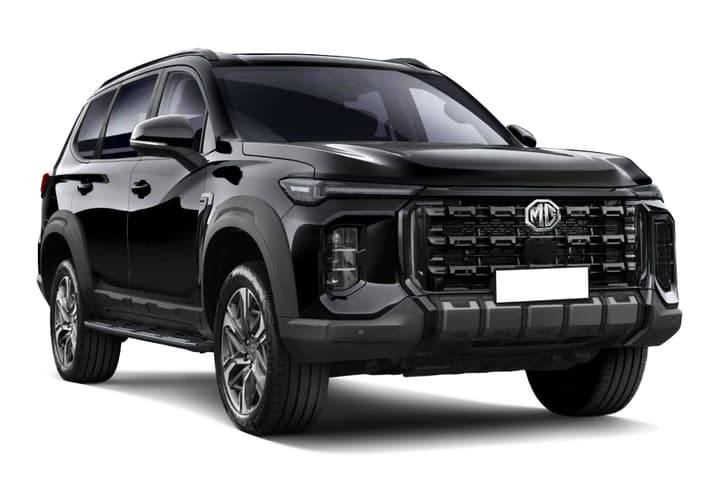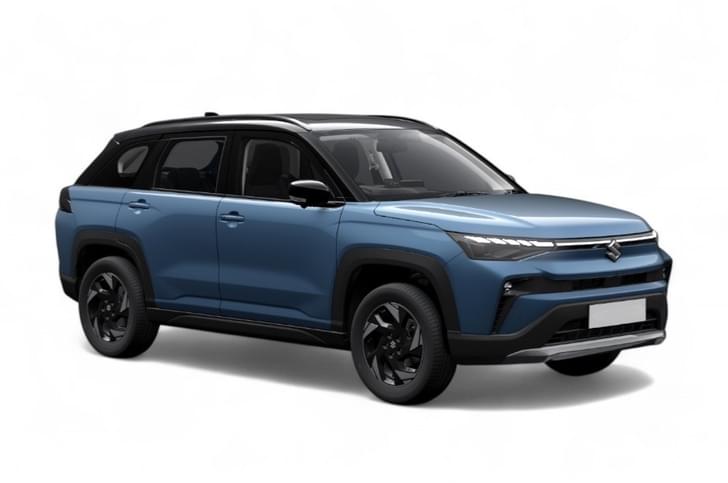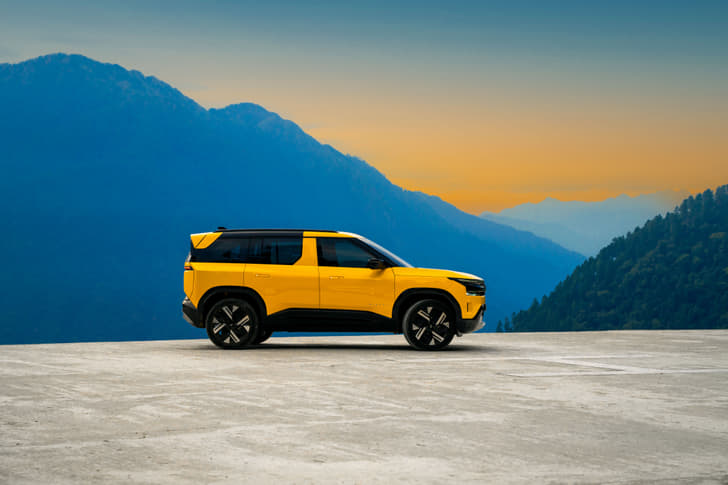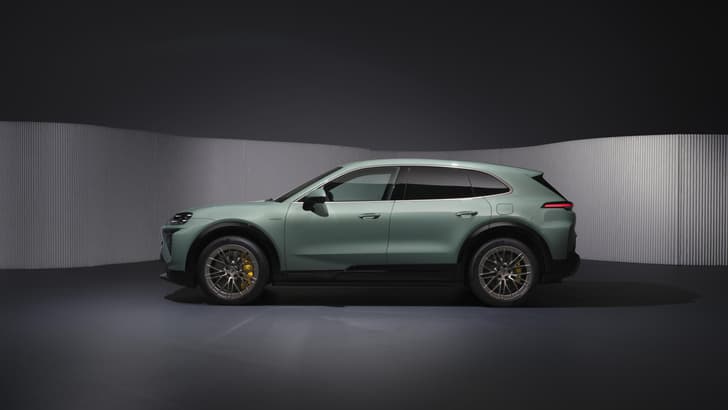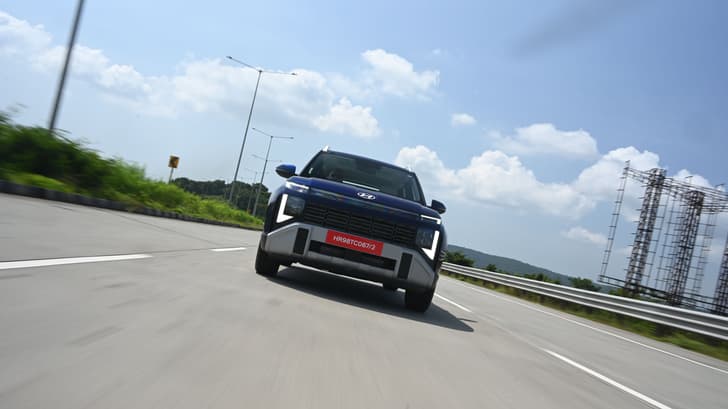What is it?
The compact SUV segment in India has offerings from almost all the major carmakers – Maruti Suzuki, Tata, Ford and Mahindra – but the second-largest car manufacturer in the country, Hyundai, has been missing from this space for the longest time. But not anymore. The Venue is here to fill in the blank in Hyundai’s portfolio,and it’s a model that’s positioned between the premium i20 hatchback and the uber-popular Creta SUV.
The Hyundai Venue is available with four engine-gearbox options in India. In diesel, there’s a 90hp, 1.4-litre engine with a 6-speed manual gearbox. Thepetrol range includes an 83hp, 1.2-litre unit with a 5-speed manual, though the petrol engine of big interest is the new 1.0-litre, direct-injection, turbocharged unit. Thisengine can be had with a 6-speed manual or a 7-speed dual-clutch auto, the latter being another first for Hyundai in India.
Hyundai Venue prices range from Rs 6.5 lakh to Rs 11.1 lakh (ex-showroom, India), putting the model right in the heart of the compact SUV segment. The package sounds promising but it’s time to find out what the final product is really like.
What’s the Venue’s exterior like?
There’s no mistaking the Venue for anything other than a Hyundai. In fact, it could easily pass off as a shrunken Creta at first glance. Its oversized, cascading chrome-lined grille might polarise opinions, but the split headlamps, with slender LED-equipped strip at the top and a square-ish housing bordered by LED DRLs, surely look striking. What this car also gets is body cladding all around to give it a tough appearance. Its flat bonnet, upright cabin, strong shoulder line, roof rails and flared wheel arches are in tandem with its SUV character. The design of the 16-inch alloys is funky too.
The Venue’s rear end isn’t as dramatic as the front and the small tail-lights make it look a touch meek from this angle, which is something the Xcent suffers with as well. However, the squarish tail-light design is quite interesting and the way the turn indicators are placed on the inside and notthe outside edge is quite a unique.The neat little reversing lights placed low down in the bumper and the thin strips of dimpled cladding are also nice touches, whilst the wide and distinctive scuff plate is a strong SUV touch. Nicely planted on its 215/60 R16 tyres that come wrapped around really attractive wheels, the Venue’s upright proportions are quite similar to the Brezza and that means it’s clearly more SUV than crossover. However, from a distance, the Venue looks quite small and it doesn’t have the same visual presence as it rivals. The tape measure proves this too –the Venue is the shortest in height (1,590mm) and the width of 1,770mm is not the best in class either; the length,at 3,995mm, is identical to its rivals.
The Venue is built on a modified version of the i20 platform but is madefrom 69 percent high-strength steel, which makes it stiffer and stronger. An interesting innovation isthe curtains around the front wheel for better aerodynamics and lowered wind noise.
What’s the Venue’s interior like?
Step into the Venue’s cabin and you’re greeted by a neatly designed dashboard with strong horizontal elements, which give an impression of solidness and functionality. Our test car sports a rather sober all-black theme with silver highlights, but the overall quality is absolutely top class. The quality of materials and fit-finish is by far the best in class. The textured dash-top is non-reflective, the vents come with beautifully damped air volume shutters and even the gear lever and steering feel great to hold. There are few, if any, low-quality plastics in here and its only when you go lower down the cabin that the plastics are a bit harder. Another smart bit of detailing is the white stitching on the steering wheel, seats and gear lever shroud that contrasts well with the all-black finish.

The floating 8.0-inch touchscreen might appear like a tablet slapped on as an afterthought, but what’s thoughtful are the string of shortcut keys below it for quick access to different functions of the system. The screen is fairly slick to use but the contrast and resolution could have been better, especially in direct sunlight. The Ford EcoSport’s 8-inch screen with SYNC3 still has the best clarity in the segment.
However, what blows rivals away is a whole host of connectivity features. The Venue has been tom-tommed as India’s first ‘connected’ car and what this means is that it comes with its own dedicated or ‘embedded’ SIM card that allows you to connect with your car in some pretty mind-boggling ways. You can lock and unlock the doors, start the car engine and switch on the aircon remotely from your phone. And by remotely, we mean remotely. You can do it all from anywhere in the world, as long as you are connected to a cellular network. Other cool features include tracking the vehicle’s location, speed, tyre pressures and even enabling geo fencing.
The first impression of the Venue’s interior is that it’s smaller than expected – a consequence of the small windows and dark interiors,which constrict the cabin’s airiness. However, once you slip into the snug-fitting and generously bolstered driver’s seat, you realise space isn’t any issue. The driving position is superb, as is the outside visibility, thanks to the high seating position. However, what’s noticeable after a long drive is the excessive cushioning in the lower back area, which curiously is the case with the back seat as well. It’s not uncomfortable but you can feel that extra bit of seat foam pushing into the small of your back. Legroom for passengers at the rear is certainly an issue –it is the least in the segment and two tall people sitting one behind the other will certainly feel cramped. Also, the small rear windows cut visibility, as do the high-set front seats, which further erodes the sense of space. The good thing is that the high front seat rails allow passengers at the rear to place their feet underneath and stretch them a bit more. The seat base is set at a good height, the backrest is nicely angled, and the decent width of the cabin means seatingthree abreast doesn’t feel too cramped.
The Venue’s cabin is very practical with plenty of stowage areas for smaller items, and all its door pockets can easily accommodate a one-litre bottle each, with space for other knick-knacks as well. Also nice is the 350-litre boot that’s well-shaped and large enough for two suitcases.
Hyundai is known to load its cars with maximum features, and the Venue isn’t an exception. In terms of safety, the top variants come with six airbags, ABS with EBD and brake assist, ESP, hill-start assist, Isofix child seat mounts and speed-sensing door locks, to name a few. Also onboard are premium features like a sunroof and wireless phone charging, and kit like projector headlamps with DRLs, cornering lamps, LED tail-lamps, cruise control, Arkamys sound, rear aircon vents, and an 8.0-inch touchscreen infotainment system with Android and Apple connectivity, aside from the much-talked-about connectivity tech, which the company has christened ‘Blue Link’
What makes Blue Link special is that it is India’s first SIM-card-based service offered in a car, which allows users to manage and perform a host of functions thanks to a dedicated server the SIM talks too. A suite of safety and security features, location-based services, driver alerts, voice commands and remote assistance can be accessed via a smart phone app.
One of the cool features here enables users to remotely start their car, as well as adjust the climate control temperature (available only in the petrol-automatic); they can also lock/unlock the car. This app works as a vehicle tracker too. And, not only will it notify you of an unauthorised access to the car, but users can also immobilize their car in case of theft. It also gets voice commands for various functions with software that understands the Indian accent. How does it work? It’s not fool proof. Several attempts at commanding the navigation system to take us back to the “Taj Vivanta Guwahati” were understood as “Taj Vivanta Goa!” You have to speak clearly and slowly for the system to get it right.
In addition, Hyundai offers road-side assistance services, ‘SOS’ or emergency services, as well as a concierge services, all via buttons placed in the rear-view mirror housing. Then there are real-time traffic updates, vehicle diagnostics, and maintenance alerts, among a total of 33 unique features, which are part of Hyundai’s Blue Link connectivity.
What’s the Venue diesel like to drive?
With two petrols and one diesel in the range, you’d assume petrol cars would form the bulk of the sale. That's not the case here. Hyundai expects a good 50 percent of all Venues to be diesels. Now the diesel in question is a familiar one – the 1.4 unit making 90hp that's found on all manner of Hyundais, from the Verna to the i20 and even the Creta.
There’s not much vibration at idle, it’s silent for the most part and what’s particularly nice is that the engine smoothens up further when I press the throttle. Like most Hyundai diesels, this 1.4 is very refined too and much quieter than the Brezza’s. However, there’s a peculiar ‘pinging’ kind of sound which can be heard when you floor the pedal.

Driving with gentle throttle inputs, the Venue pulls reasonably well even when the engine is ‘off-boost’, but when you flex your right foot for an instant response, there’s a fair bit of turbo lag that bogs down the engine below 1,800rpm. It’s after this point that the engine wakes up but in a linear and progressive sort of way. Unlike the Maruti Brezza, however, there’s no big slug of power when turbo boost comes in and whatyou get is a gentle build of power. Also, the Hyundai isn’t quite as free-revving and has done its best work by 3,500rpm, so revving it all the way to the 5,000rpm redline is rather futile. This means the best way to drive the diesel Venue is to short-shift and drive it in a relaxed manner. Even the 6-speed manual gearbox works well, and the clutch is light, so selecting gears requires no extra effort.
Our test car is brand new and even feels a bit ‘tight’, but we just had to strap on our Vbox timing gear. The Venue diesel’s 0-100kph time of 15.48sec is still a good deal off from what you'd expect from a car in this class. Competitors like the Brezza at 12.96sec, the XUV300 at 11.85sec and the EcoSport at 12.74sec are clearly a whole lot quicker. The Venue’s performance isn’t as effortless as its rivals and be prepared to row through that 6-speed gearbox a lot, especially on the highway, to get the most out of it.
What’s the Venue petrol like to drive?
If its performance you want from your Venue, the version to go for is this 1.0-litre, three-cylinder, direct-injection turbo-petrol that develops a healthy 120hp and 172Nm of torque and drives the front wheels via a 6-speed manual or a seven-speed twin-clutch gearbox –a first for Hyundai in India. A first impression of the engine isa nicely balanced idle, with hardly any of the rocking motion that is characteristic of a three-cylinder unit. In fact, this all-aluminium engine with balancer shafts is smooth and free revving and doesn’t feel like a three-pot mill,except for a faint thrum at high revs.

It isn’t very energetic from the get-go, due to a bit of turbo lag, and again the power delivery doesn’t quite have a punchy, turbo-like mid-range but is more progressive “in the interests of fuel economy,” according to a Hyundai official. Also, the power delivery isn’t entirely seamless, and you can feel a few ‘steps’ in the power band, especially around 5,000rpm where there is a distinct kick for the final assault to the 6,700rpm rev limiter. The fact is that this motor doesn’t have the smooth and amazingly flat and broad torque spread of the award-winning Ford Ecoboost engine in the EcoSport,but we love its willingness to rev. The 6-speed manual has a delightfully light and short throw, which eggs you on to rev the socks off this motor. The gearing however is a bit tall, especially in the third gear, which is good for nearly 150kph. Shorter gearing would have given the 1.0 Venue a bit more urgency but altering the ratios of this off-the-shelf gearbox (used internationally in the Stonic, amongst other Hyundais) was not feasible.
The DCT option makes the experience nicer still. The twin-clutch gearbox is quick to respond, relatively jerk-free and works well with the engine. It’s smooth at low speeds, it shifts up almost without your knowledge and is even adept at shifting to a lower gear if it senses you’ve tapped on the accelerator a bit hard. There are no paddle shifters, sadly, and, at times, the gearbox thwarts downshifts attempted in close proximity to the redline, such as when you are about to dive into a corner. But apart from that, Hyundai’s combination of petrol direct-injection turbo and twin-clutch gearbox worksreally well. You won’t feel short-changed when it comes to performance either –the 1.0 turbo DCT Venue hits 100 from rest in just 12.58sec. We couldn’t test the manual turbo-petrol but we imagine that it would be quicker still.
What about the Venue’s ride and handling?
Hyundai engineers have deliberately tuned the Venue’s suspension on the stiffer side, and this is evident within the first 50 metres of driving the car. At low speeds, the Venue feels quite stiff-kneed and thuds through ruts and potholes, but not in a jarring sort of way. The relatively high-profile 215/60 R16 tyres do their bit in cushioning the shocks. The fairly long wheel travel and 195mm ground clearance means the Venue doesn’t get phased by speed breakers or broken roads, and the faster you go the better job the Venue does of smothering bad surfaces. Also, the suspension works silently, which only accentuates how calm the Venue is over bad roads.
At high speeds on an undulating surface, however, the damping isn’t as well-contained, especially on the rebound, and the Venue tends to bob around a bit. The ride isn’t as flat as we would have liked but it’s comfortable for the most part.

What’s impressive is the Venue’s taut body control and its ability to change directions, despite a steering that has a hint of vagueness and isn’t as ‘connected’ as the other connected bits of the car!
No, this is not a car you will enjoy hurling around tight corners, and steering accuracy drops sharply the harder you drive it. A Ford EcoSport it certainly isn’t, but you can’t help being impressed by the tidy ride-handling balance of the Venue. And then, importantly, it is light and effortless to drive in traffic.
Should I buy one?
So, does the Venue have what it takes to take on the competition? Simply put, yes. Sure, legroom in the rear isn’t as good as the competition, and the diesel definitely needs a bit more zing, but, apart from that, the Venue ticks all the boxes. It’s attractive on the outside, beautifully built on the inside, festooned with tech and features, and delivers a very impressive all-round performance. It rides well, the petrol-automatic drives nicely, and then the connected car tech just makes it quite unique.
With prices starting at Rs 6.50 lakh for the base 1.2-litre petrol-manual and going up to Rs 11.10 lakh for the 1.0-litre, turbo-petrol automatic, it offers good value too. The Mahindra XUV300, Maruti Brezza and Ford EcoSport sure have a tough battle on their hands.
Shapur Kotwal and Hormazd Sorabjee
Click here for Hyundai Venue prices, reviews, images, videos and more
Click here for Hyundai India models, prices, reviews, images, videos and more
























